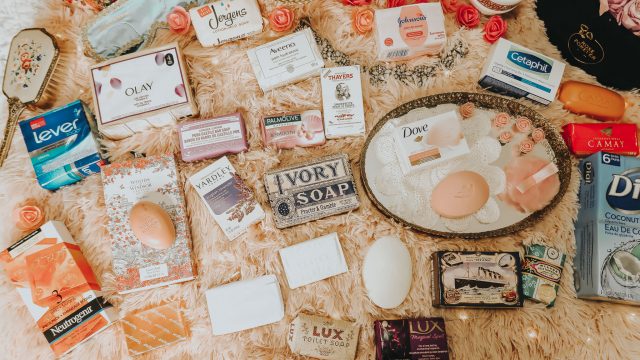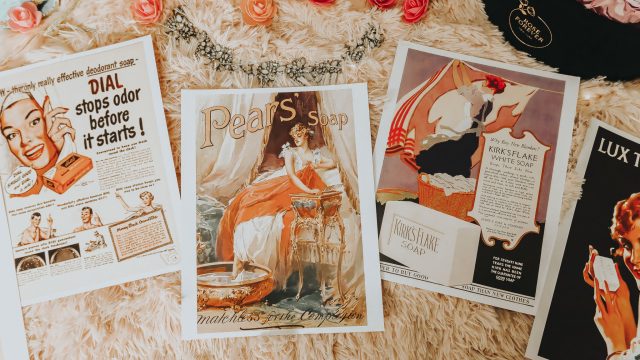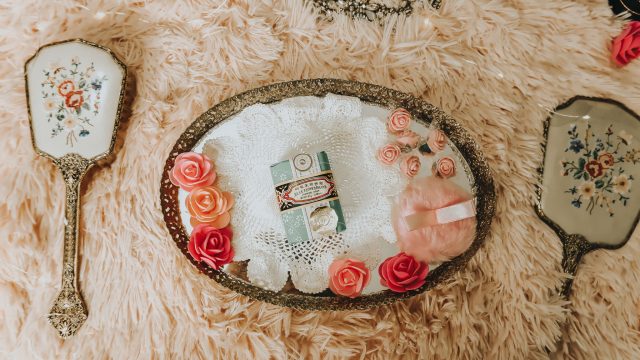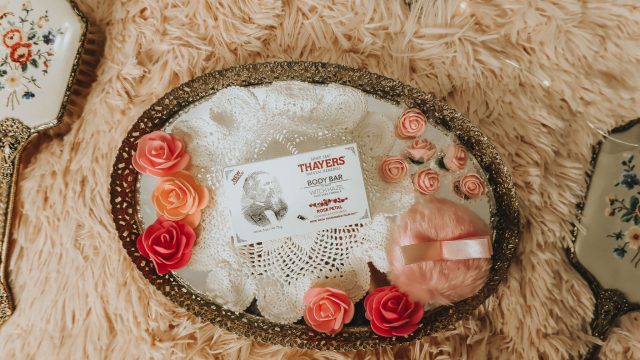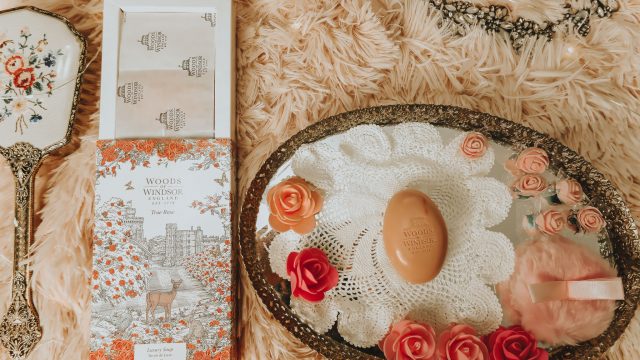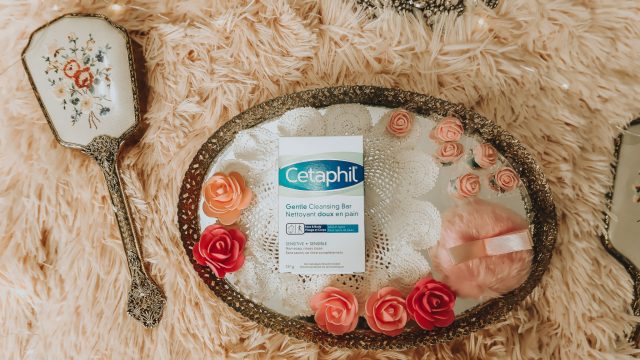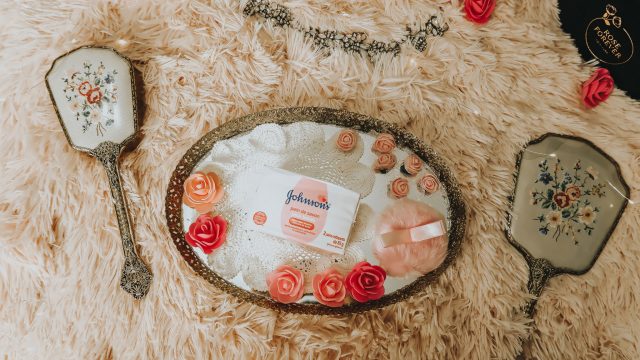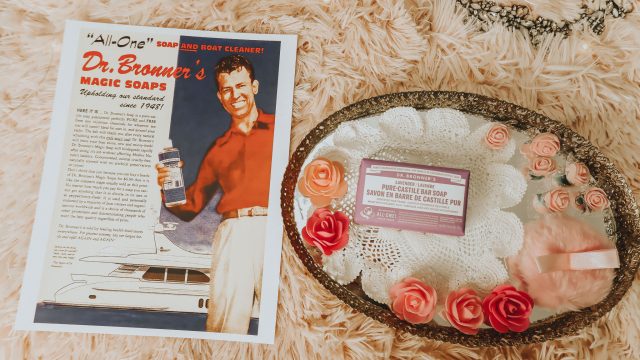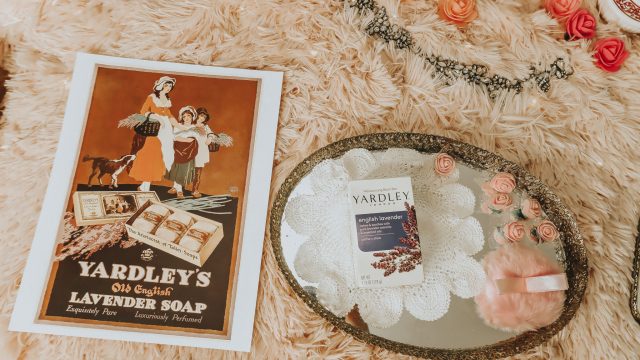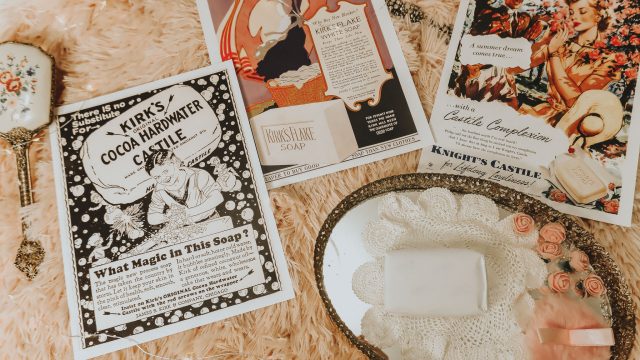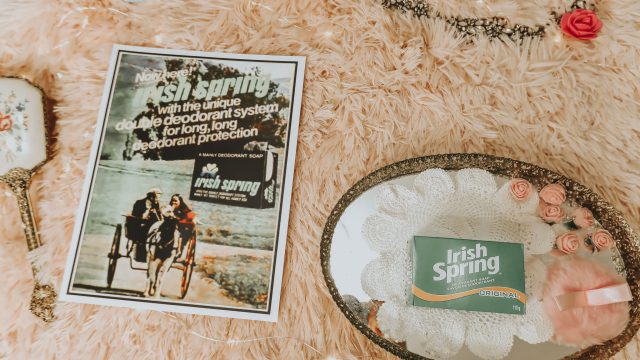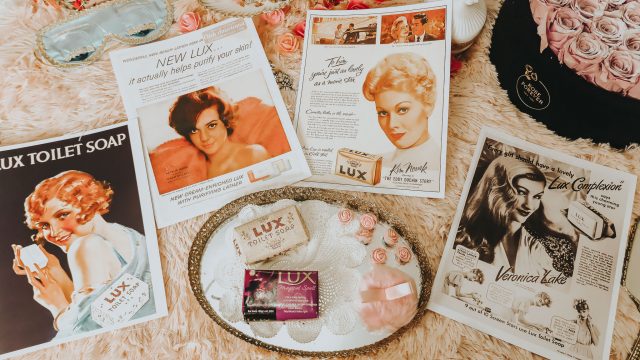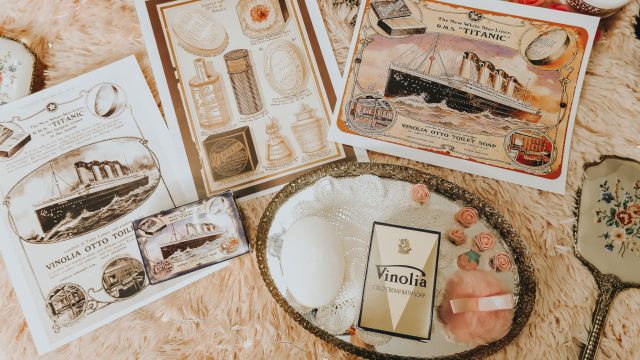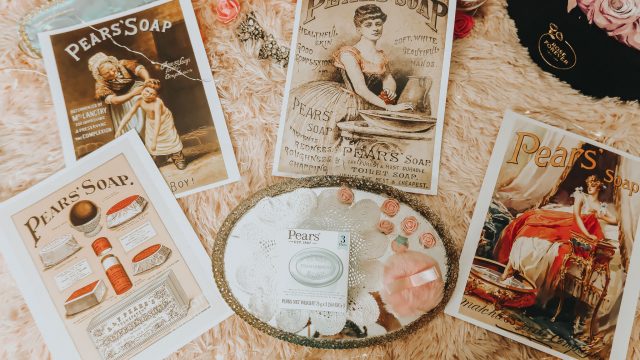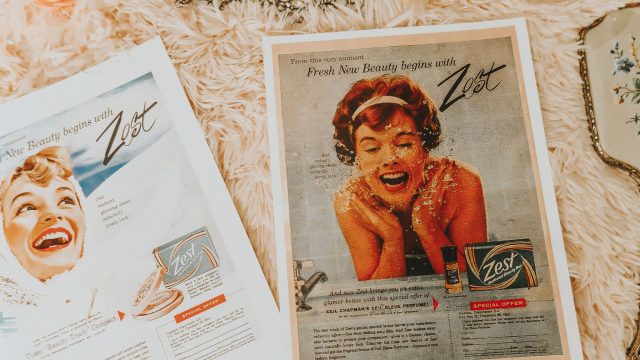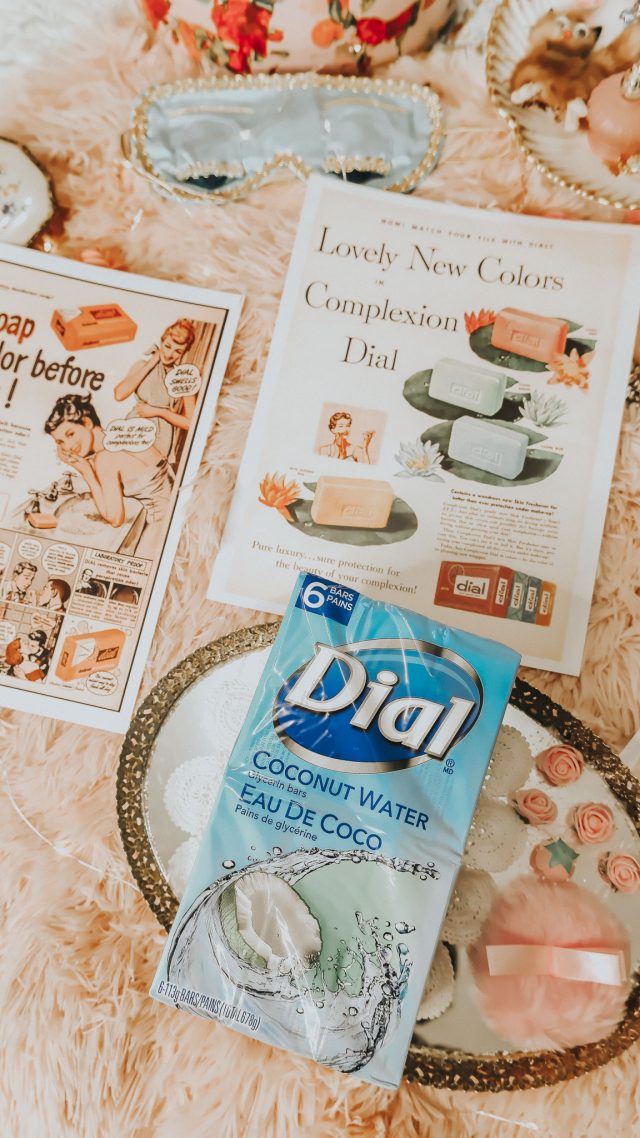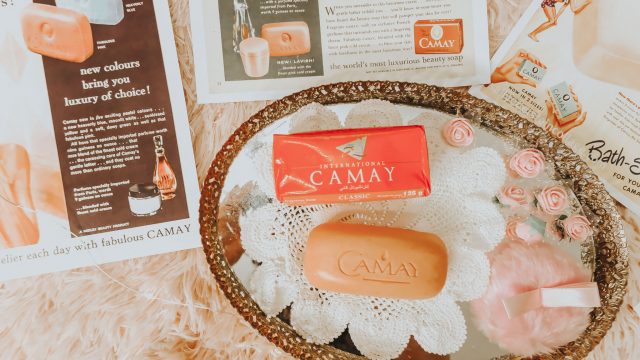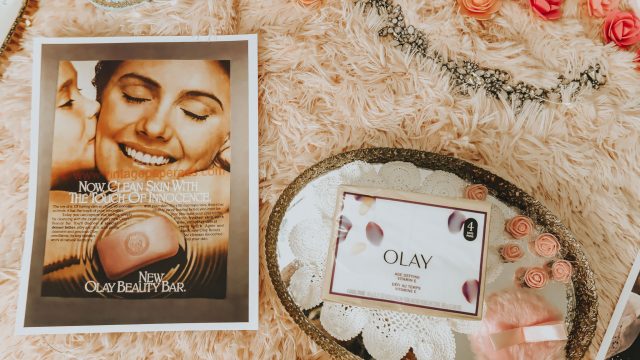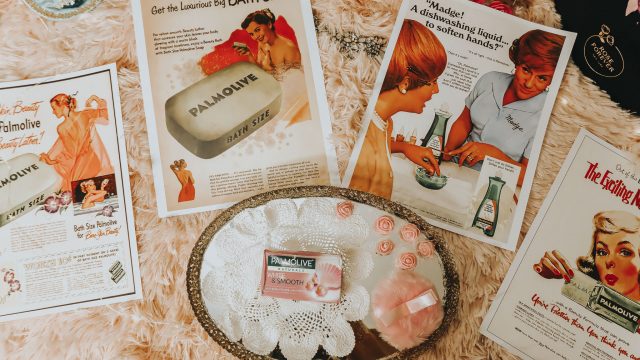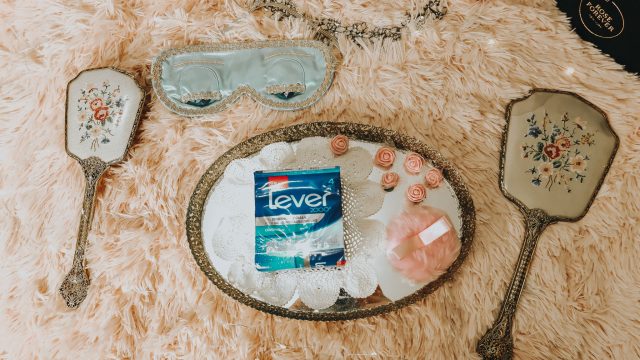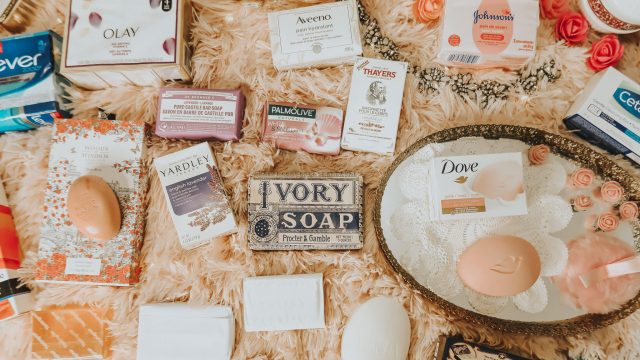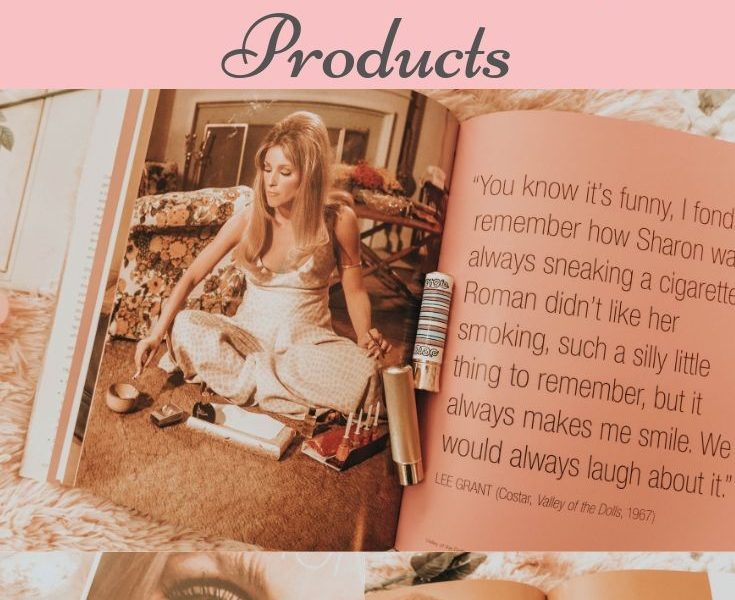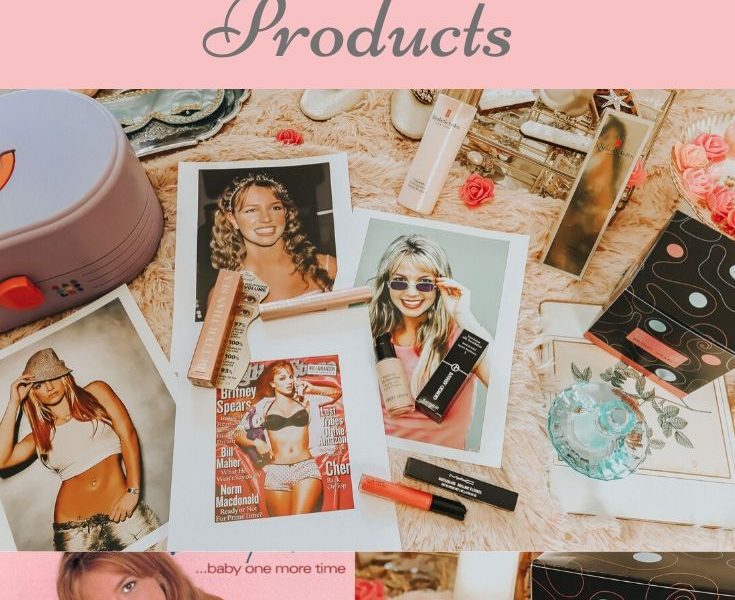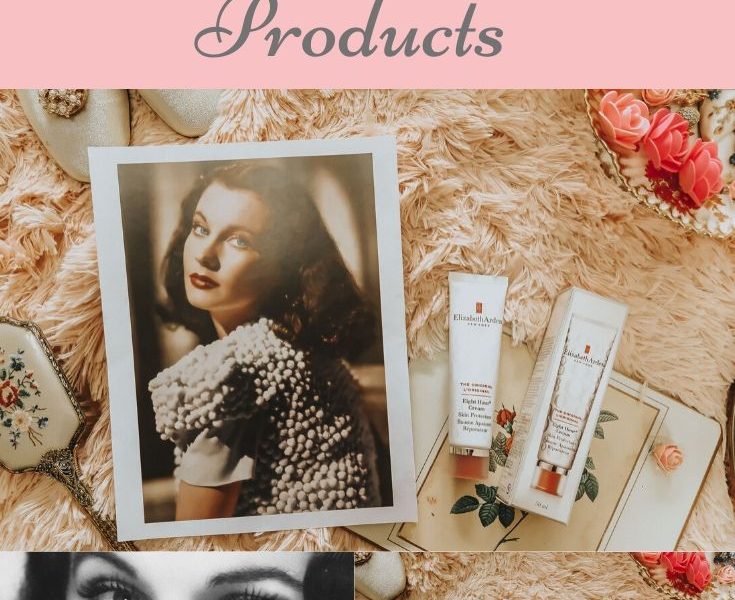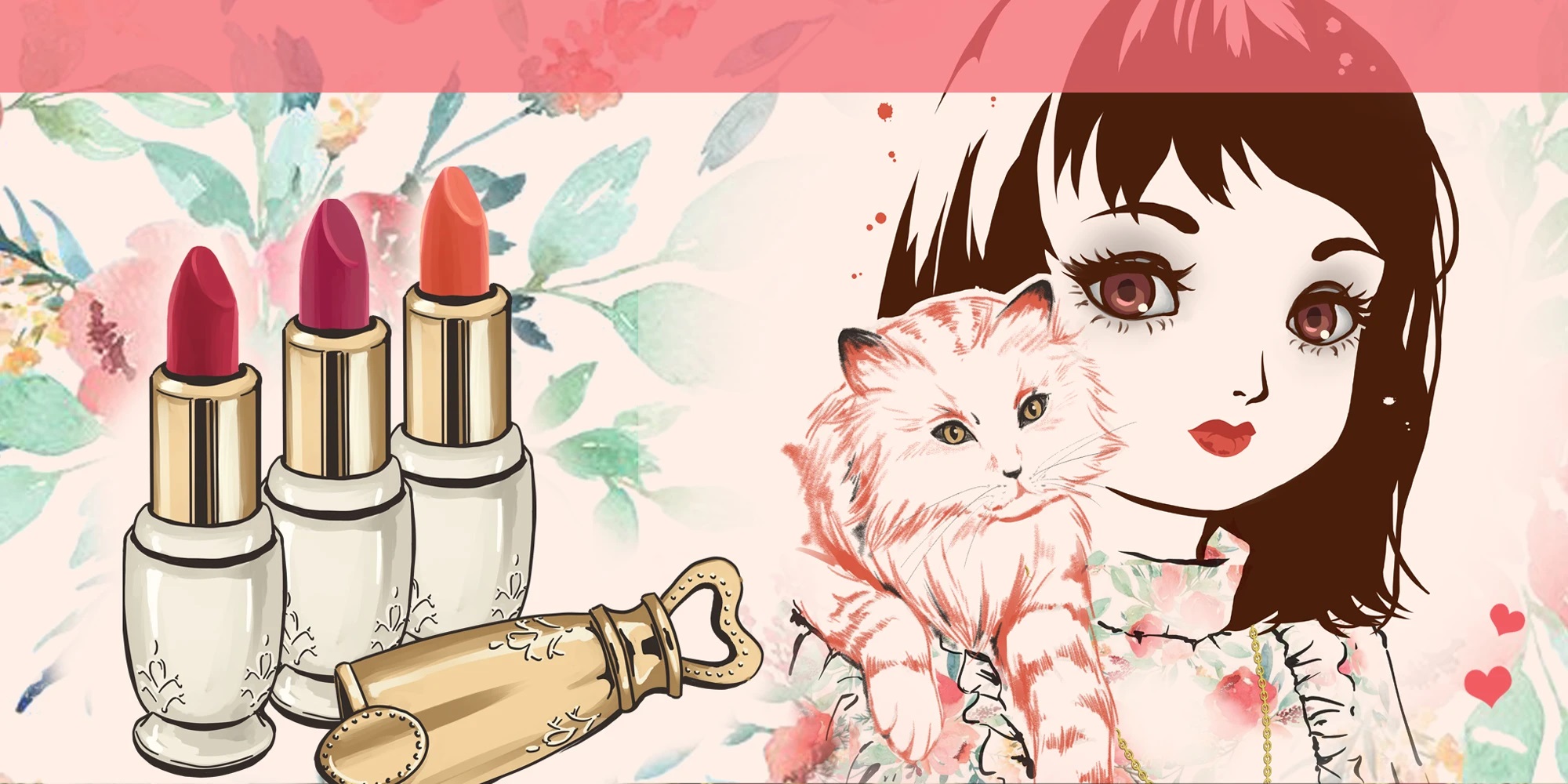Hello lovelies, today I will be discussing vintage soap you can still buy today. I was surprised to find out how old some of these conventional household soap brands are.
LUX is a global brand developed by Unilever. The range of products includes beauty soaps, shower gels, bath additives, hair shampoos, and conditioners. Lux started as “Sunlight Flakes” laundry soap in 1899.
The brand concentrated on building its association with the increasingly popular world of film, highlighting movie stars and their use of the product. In 1929, advertising featured 26 of the most prominent female stars of the day, creating a significant impact among the movie-loving target audience. This was followed by Hollywood directors talking about the importance of smooth and youthful skin. This pioneered the trend of celebrity product endorsements.
Camay is a brand of soap owned by Unilever. It was first introduced in 1926 by Procter & Gamble and was marketed as a “white, pure soap for women,” as many soaps were colored to mask impurities. Camay’s slogan for many years was “Camay: the soap for beautiful women.” It was later replaced with “For your most beautiful complexion at every age.”
In 1840, the J.B. Williams Company in Glastonbury, Connecticut, manufactured soap under the name Ivorine. Williams decided to focus on its shaving soap and sold Ivorine to Procter & Gamble, which later developed Ivory. In 1879, James Norris Gamble, son of the founder and a trained chemist, developed an inexpensive white soap. Ivory’s first slogan, “It Floats!”, was introduced in 1891. The product’s other well-known slogan,”99 44⁄100% Pure” (in use by 1895), was based on the results of an analysis by an independent laboratory that Harley Procter hired to demonstrate that Ivory was purer than the castile soap then available. Ivory bar soap is whipped with air in its production and floats in water. According to an apocryphal story, later discounted by the company, a worker accidentally left the mixing machine on too long. The company chose to sell the “ruined” batch because the added air did not change the essential ingredients of the soap.
Andrew Pears, the son of a farmer, was born about 1770 in Cornwall and moved from his native Mevagissey to London around 1787. He completed his apprenticeship in 1789, established a barber’s shop in Gerrard Street in Soho, and began to produce cosmetic products. At that time, Soho was a high-end residential area, and Pears’ clientele included many wealthy socialites who took pride in their appearance. The fashion among the wealthy was to have pristine white complexions; tanned faces were associated with those who labored outdoors. Pears found that his powders and creams were frequently used to cover up damage caused by the harshness of the soaps and other beauty products that were in general use at the time, many of which contained arsenic or lead. Pears began to experiment with soap purification and eventually produced a gentle soap based on glycerine and other natural products. The clarity of the solvent gave it a novel transparent appearance, which provided a marketing advantage. To add to the appeal, Pears gave the soap an aroma reminiscent of an English garden.
Palmolive is the American brand of a line of products produced by the parent company, Colgate-Palmolive. The name originated in 1898, and the company sells associated products in various countries. The B.J. Johnson Soap Company was established in Milwaukee, Wisconsin, in 1864. In 1898, the company introduced Palmolive soap, a formula created by the company that included palm and olive oil.
Established in 1770, Yardley was a major producer of soap and perfumery by the beginning of the 20th century. By 1910, it moved to London’s Bond Street, and in 1921 Yardley received its first Royal Warrant. Today, Yardley holds two Royal Warrants.
Zest is a brand name, or trademark, which Procter & Gamble introduced in 1955 with the slogan “For the first time in your life, feel really clean.” Early commercials stated that Zest is not a soap, because it does not leave the sticky film that soap does. A 1970-era commercial illustrated this concept with a clear demonstration in which two photographs of a person were each dipped in one of two bowls, one labeled “soap” and the other “Zest” — the one that came out of the “soap” bowl had a scummy coating. In contrast, the one that came out of the “Zest” bowl had no such coating. The brand experienced an uptick in sales in the 1980s and early 1990s, with the advertising slogan “you’re not fully clean unless you’re Zestfully clean!”
When Lever Brothers’ original Dove’ beauty bar’ first hit the U.S. market in 1957, ad messaging took a slightly different approach from the norm, focusing on the notion that Dovewas’ much better for your skin’ than soap due to its mildness and its content of ‘one-quarter cleansing cream.
Olay originated in South Africa as Oil of Olay. Graham Wulff, a former Unilever chemist from Durban, started it in 1952. He chose the name “Oil of Olay” as a spin on the word “lanolin”, a key ingredient.
Neutrogena was founded in 1930 by Emanuel Stolaroff and was formerly a cosmetics company named Natone.
Irish Spring was launched in Germany in 1970 and the U.S. in 1972. Up until 1990, Irish Spring soap bars only came in one scent (known internally as “Ulster Fragrance”), but the Colgate company has since branched out into several niche varieties and scents.
Aveeno was founded in 1945 by brothers Albert and Sydney Musher, and its first product was their Soothing Bath Treatment. The active ingredients in all Aveeno products are colloidal oats or oat extracts—avenanthramides, which have been branded as “active naturals”. The brand slogan is “Better Ingredients. Better Skincare: Aveeno.”
Dial was developed by a chemist from Armour and Company, a meat-packing company, and introduced in the Chicago market in 1948. Armour had produced soap since 1888; its laundry soap was made from tallow, a by-product of Armour’s meat production processes. Dial was made antibacterial by the addition of hexachlorophene, referred to by the company as AT-7. The product was named Dial and promised “round-the-clock” protection against the odor caused by perspiration. Dial was introduced nationally in 1949 and was advertised as “the first active, really effective deodorant soap in all history [because it] removes skin bacteria that cause perspiration odor”.
Invented in 1947 by a pioneering pharmacist in Texas, the first product – “Cetaphil Cleansing Lotion “- known today as Cetaphil Gentle Skin Cleanser – still uses the same formula.
Vinolia soap was the only soap to be selected for the first-class cabins on the RMS Titanic. It was and still is a luxurious soap, only now it’s available to anyone who likes to pamper themselves every time they bathe or shower.
Lever 2000 soap enters the world, arriving in consumers’ homes along with their Sunday paper. … Promoting health in 1994, we tackled the “germs on your hands that come from your nose,” and introduced the Lever 2000 antibacterial soap.
Kirk’s is the only coconut castile soap brand continuously made since 1839. We only use 100% natural ingredients for health-conscious families who want everyday, high-quality cleansing products – free from chemicals – at a good value.
Dr. Bronner’s Magic Soaps is an American producer of organic soap and personal care products headquartered in Vista, California. The company was founded in the late 1940s by Emanuel Bronner and continues to be run by members of the Bronner family.
Johnson’s Baby is an American brand of baby cosmetics and skincare products owned by Johnson & Johnson. The brand dates back to 1893 when Johnson’s Baby Powder was introduced.
Lifebuoy:
Lever Brothers introduced Lifebuoy in 1895 in the United Kingdom. Originally a carbolic soap containing phenol, different varieties were later introduced without the medicinal carbolic smell, such as the coral-colored Lifebuoy during the late 1950s and Lifebuoy Minty Refresher 1966. Lifebuoy was one of the most popular soaps in the United States from approximately 1923 to the mid-’50s when perfumed soaps took over the market. It was the best selling medicated/health soap in North America until roughly 1951. It was well known for its red and yellow packaging, red color, octagonal shape, and carbolic aroma.
Launched in 1928, the Bee & Flower Sandalwood Soap, perfumed with elegant sandalwood essence and beautifully packaged, has been called the “queen of soaps.” It’s China’s most exported soap, with loyal customers across the world
Caswell-Massey, founded in 1752, is the first fragrance and personal care product company in America. Originally, Caswell Massey started as an apothecary shop in Newport, Rhode Island, by a Scottish-born doctor named William Hunter. The main product categories include fine-fragrance, soap, bath & body products, men’s shaving products, toiletries, and other assorted apothecary-style personal care accessories. Its products favor notable historical figures such as JFK, George Washington, Cole Porter, Alla Nazimova, John Denver, and The Rolling Stones.The company is regarded as the fourth-oldest continuously operating company in America and the oldest American consumer brand in operation. The current motto is “America’s Original”.
The origin of the Woods of Windsor luxury bath, body & home brand comes from a small apothecary located in Windsor’s shadow as far back as 1770. This local apothecary served not only the townsfolk of Windsor but also the Royal family and its distinguished visitors.
In 1847, Henry Thayer M.D., opened a laboratory on Main Street in Cambridge, Massachusetts, to produce his newly developed line of herbal extracts for sale to the medical profession. Born in 1828, into one of Massachusetts’ founding families, he was trained in the medical arts of his day by his physician father.



